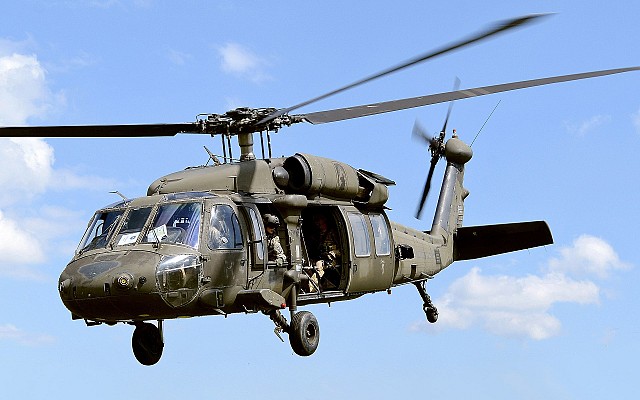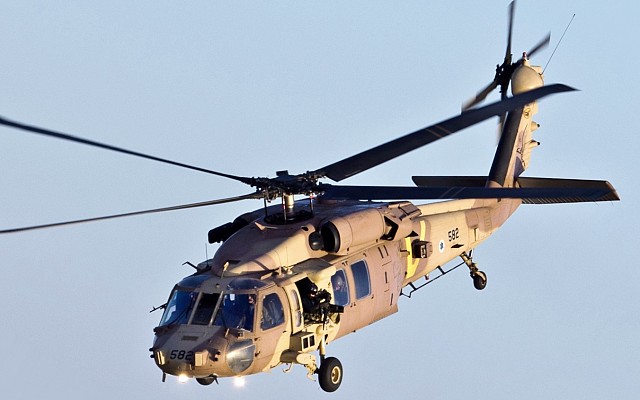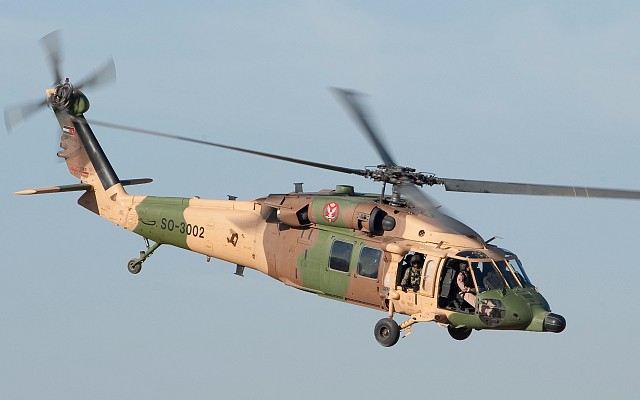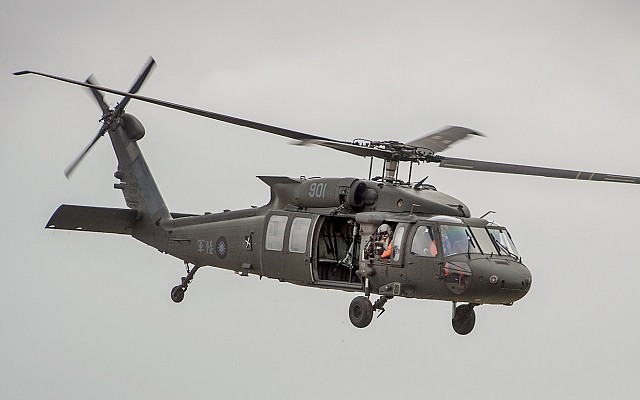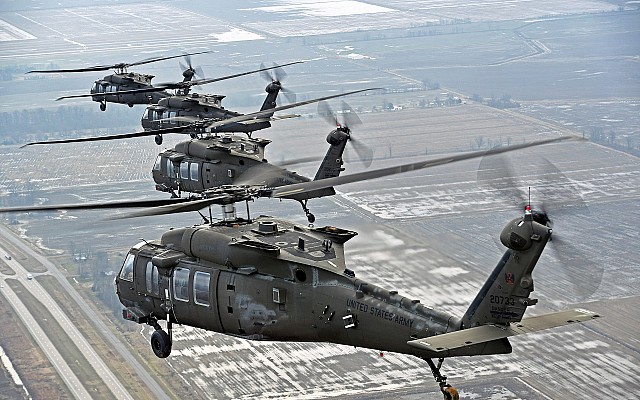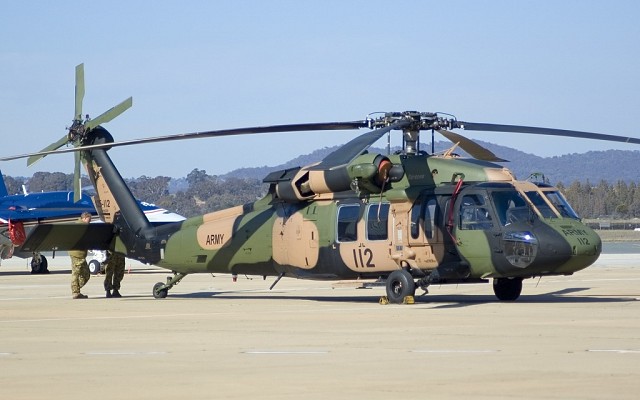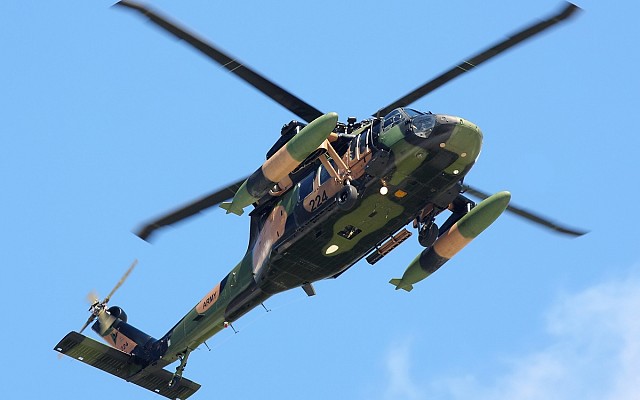Sikorsky UH-60 Black Hawk
S-70A
Overview
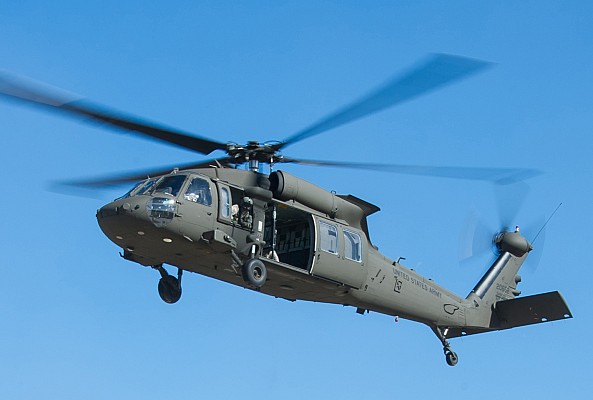
UH-60M Black Hawk
US Army UH-60M Black Hawk seen in flight in 2019.
Source: US Army -
© Public domain
1974 - 1977 (prototypes)
Japan - Mitsubishi Heavy Industries
Australia - Hawker de Havilland
Poland - PZL Mielec
UH-60 (US military designation)
Black Hawk (official nickname)
Description
Introduction
The UH-60 Black Hawk is a late Cold War era transport helicopter of US origin. The UH-60 was developed by Sikorsky to meet a US Army requirement to replace the UH-1. The UH-60 was the first S-70 / Black Hawk series of helicopters to enter service. This article describes the baseline medium transport helicopter.
Design
The UH-60 has a conventional layout with the pilots seated side by side at the front and the troop compartment in the center. A four blade main rotor is used in conjunction with a four blade tail rotor. The heavy duty landing gear consists of two single wheel shock absorbing struts at the front and a small tail wheel. The troop compartment can be fitted with seats and is accessed via two large sliding doors. Optional External Stores Support System can be fitted, allowing for external drop tanks or armament to be fitted.
Cargo capacity
As a troop transport the UH-60 can seat and move a squad of 11 soldiers. In the medical transport role six stretchers can be carried. Cargo capacity is 1.2 to 1.45 t internally or 4.1 t externally. This allows the UH-60 to sling load a 105mm M102 howitzer and carry its crew of six and 30 shells and charges.
Firepower
The UH-60 is not meant to be an attack helicopter and for most missions only limited armament is carried. Each of the side windows can be fitted with a M144 pintle mount for a 7.62mm M60D or M240 machine gun, 7.62mm M134 minigun or 12.7mm GAU-19 minigun. Optional ESSS detachable stub wings allow for two wet hardpoints each side. These are mostly used with two 1.700 L or four 870 L drop tanks, but can hold 7 and 19-tube launchers for 70mm Hydra aerial rockets. Other specialized variants of the Black Hawk can be fitted with a wider range of armament, including autocannon and guided missiles.
Avionics
When introduced the UH-60 featured analog avionics. The UH-60M introduced a glass cockpit with health management computer and GPS navigation. Some specialist and export variants feature a weather radar in the nose and/or a FLIR sensor.
Users
The US Army acquired the UH-60 Black Hawk in large numbers to replace the UH-1 Huey in its airborne divisions and for utility and medevac roles. Various US allies in Europe, the Middle East and Asia have acquired the UH-60 as well, either in US military configuration or S-70A commercial export variant.
Variants
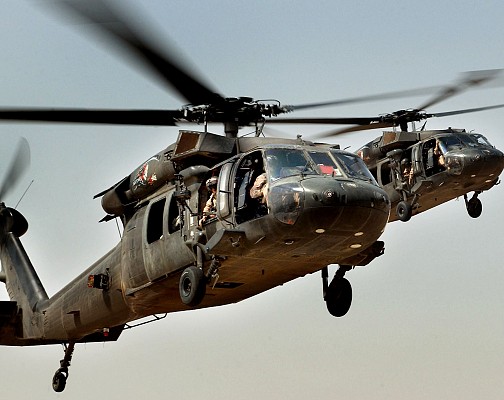
UH-60 Black Hawk
Two US Army UH-60 Black Hawk helicopters of the 101st Airborne Division in flight over Tikrit, Iraq, in 2006.
Source: US Army -
© Public domain
Main US military utility variants
Details
Media
Armament options
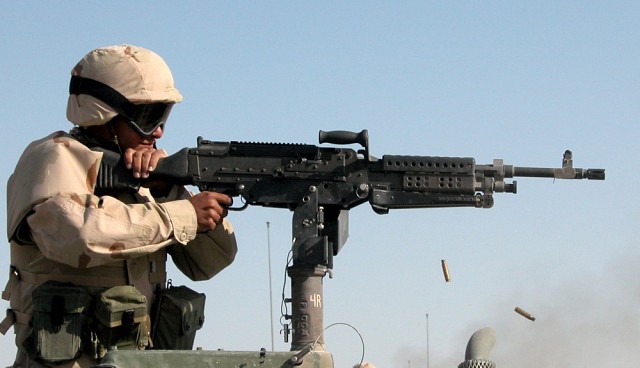
7.62mm M240
The 7.62mm M240 is the most common type of armament seen on the M144 armament subsystem mounted at the window between the cockpit and main sliding doors.
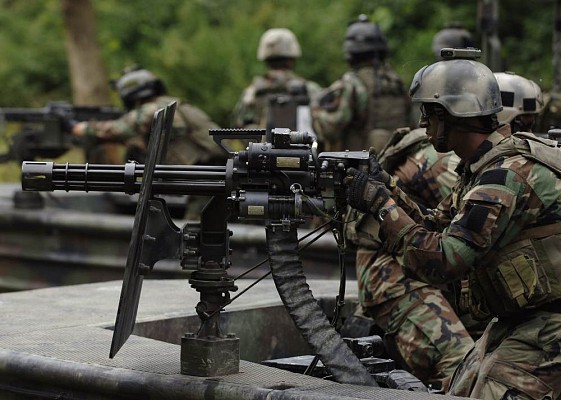
7.62mm M134
The 7.62mm M134 / GAU-2 minigun can also be mounted on the M144 armament subsystem.
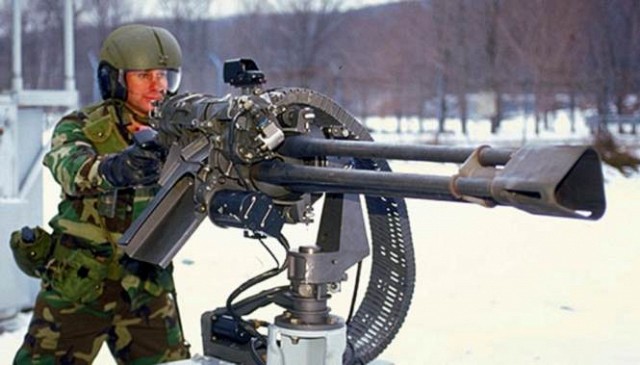
12.7mm GAU-19
The 12.7mm GAU-19 is the heaviest type of weapon that can be mounted on the M144 armament subsystem.
Related articles
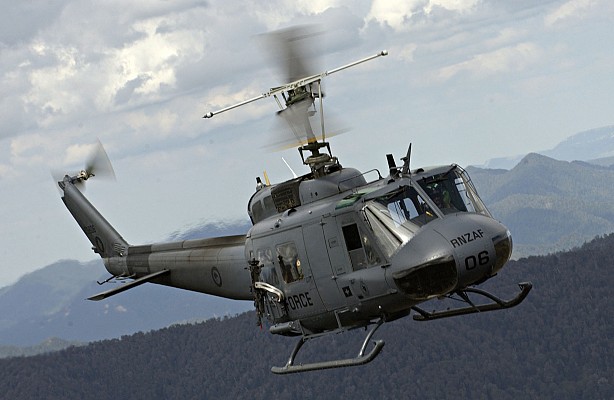
Bell 205
The UH-60A Black Hawk was adopted as the successor of the iconic UH-1D and UH-1H Iroquois helicopter in US Army service.
